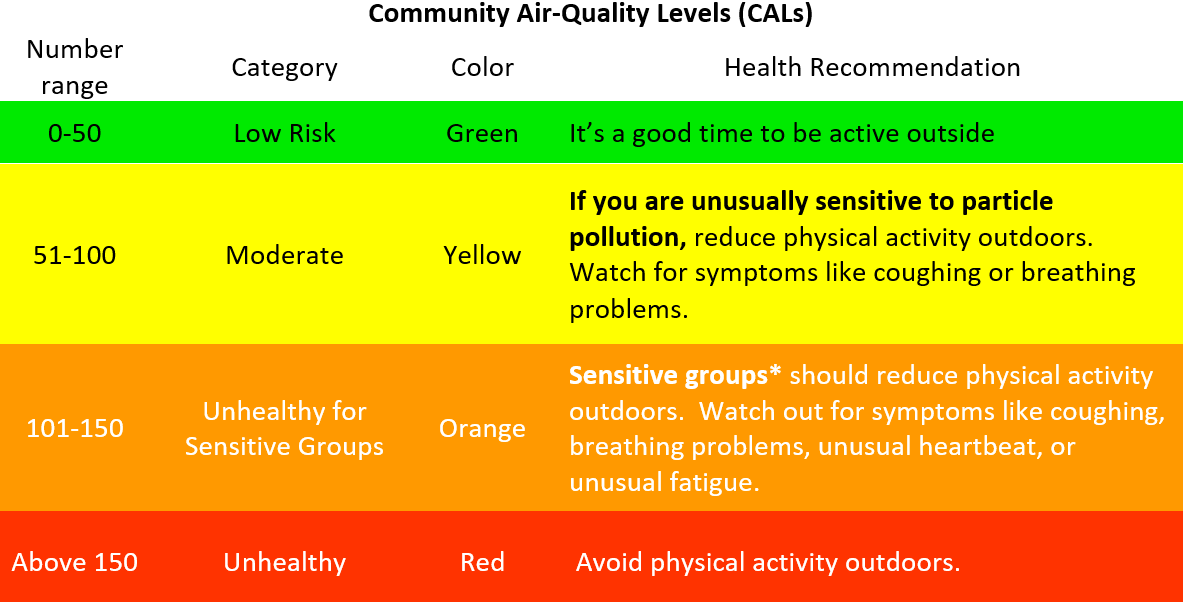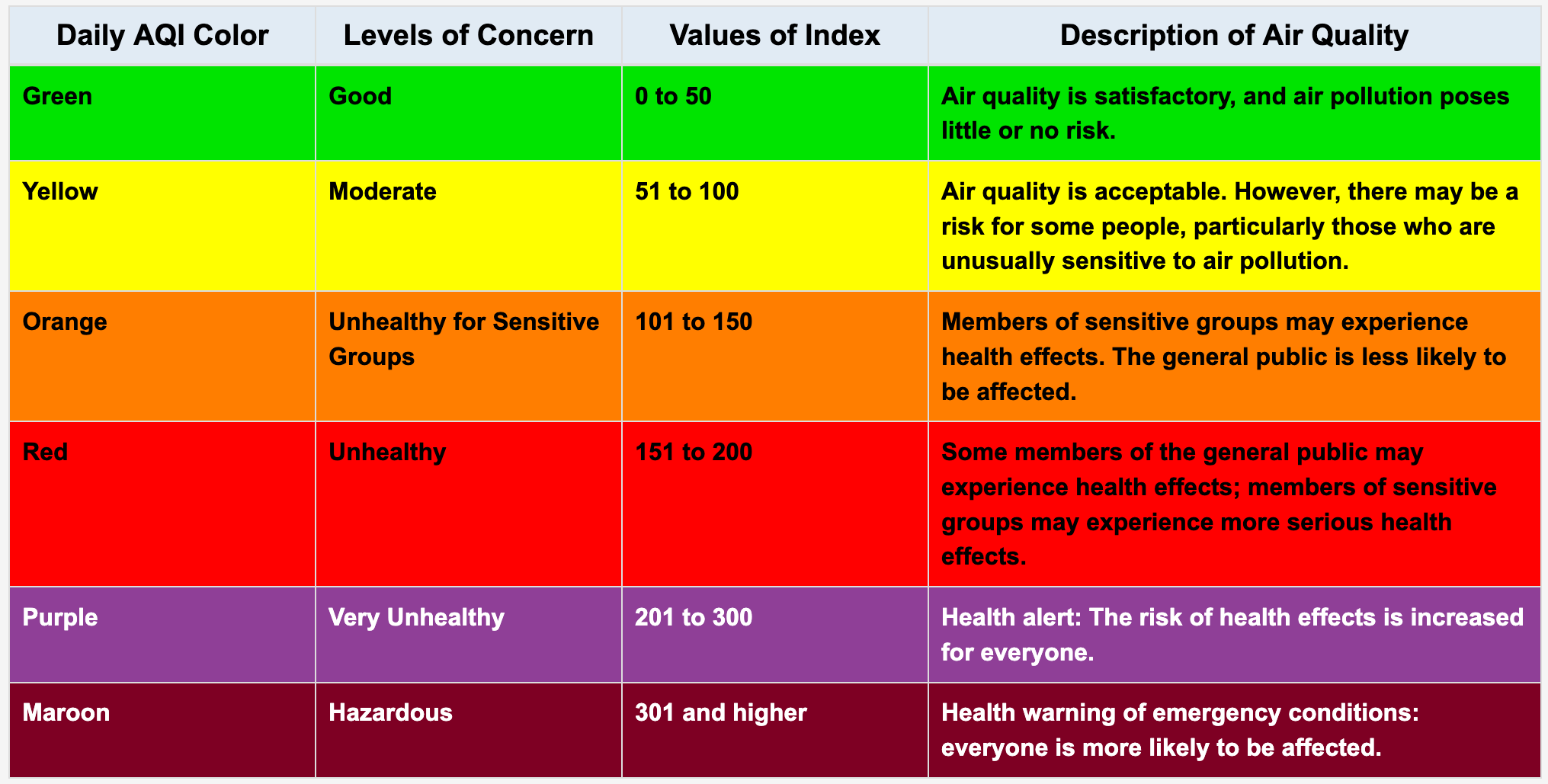List of Air Monitors Imperial
Select the monitor name to view more air quality data for that location. Find out what the Community Air-Quality Level colors and numbers mean.
Select the monitor name to view more air quality data for that location. Find out what the Community Air-Quality Level colors and numbers mean.
Community Air-Quality Levels (CALs) are used to describe air quality in terms of how harmful the level of particulate matter (PM) pollution in the air is to human health. The CALs are derived using similar methods as EPA’s Air Quality Index (AQI).
You should use both IVAN Air Monitoring and government air data to understand the air quality levels around you. When comparing health recommendations from both sources, you should follow the most health protective recommendation.

*Sensitive groups include children, teens, older adults, pregnant women, and people with heart, lung, or other chronic diseases
The U.S. AQI is EPA's index for reporting air quality.
The U.S. Air Quality Index (AQI) is EPA's tool for communicating about outdoor air quality and health. The AQI includes six color-coded categories, each corresponding to a range of index values. The higher the AQI value, the greater the level of air pollution and the greater the health concern. For example, an AQI value of 50 or below represents good air quality, while an AQI value over 300 represents hazardous air quality.
For each pollutant an AQI value of 100 generally corresponds to an ambient air concentration that equals the level of the short-term national ambient air quality standard for protection of public health. AQI values at or below 100 are generally thought of as satisfactory. When AQI values are above 100, air quality is unhealthy: at first for certain sensitive groups of people, then for everyone as AQI values get higher.
The AQI is divided into six categories. Each category corresponds to a different level of health concern. Each category also has a specific color. The color makes it easy for people to quickly determine whether air quality is reaching unhealthy levels in their communities.

When using this information, please note the following:
Learn more about our monitor validation process, how to use the data on this website, and how to compare the data with government
View the Air Monitoring Q&A for more information on the following topics:
Air quality data for Imperial County currently reported by government regulatory air monitors are available at www.imperialvalleyair.org and www.co.imperial.ca.us/AirPollution.
Data reported by IVAN Air Monitoring and by government monitors should both be used to better understand air quality levels near you. There are differences in how these data are collected, such as the locations monitored, the equipment used, and pollutants measured. Therefore, differences in reported air data are expected. When considering how to best protect your health, we recommended you consider multiple sources of air quality data and follow the most health protective recommendations.
Visit the Air Monitoring FAQs for more information about how our data compares with government data.
If you are experiencing an emergency, call 9-1-1.
Step 1. Report to Imperial County Air Pollution Control District.
Call (442) 265-1800 as soon as you notice a problem with air quality. Their website lists what information to provide in order to support their investigations. It also describes what to expect when you submit a complaint.
Step 2. Report on IVAN.
After contacting the APCD, we recommend that you also submit a record of the problem here on IVAN Imperial, including a note that APCD has been contacted. This ensures that the Environmental Justice Task Force is aware of the complaint and that the complaint is documented on the IVAN Imperial website.
Copyright © 2008 - 2025 IVAN - All Rights Reserved
© HTML5UP.net. All Rights Reserved
Comite Civico del Valle, Inc